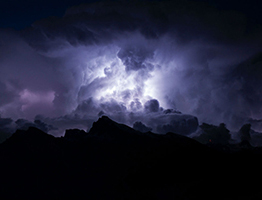Cable car regulations
A chairlift, pendulum cable car or circular cable car often hangs high in the air. Suppose a cabin or seat is not properly clamped to the cable, it can come loose and fall down with all the consequences that entails. That should definitely not happen and that is why there are rules that the cable cars must comply with. For example, a chairlift is not allowed to make its rounds at 100 km per hour. Especially on tracks with a fixed clamp, getting in and out would pose a slight problem. Each country therefore has its own regulators and its own rules.
Maximum speeds
As mentioned, a chairlift that flies up and down at 100 km per hour is not recommended. Things are going well, the wind in your face is probably wonderful, but first try getting into the chair.
Funiculars
Maximum speed: 14 m/s or approximately 50 km per hour
Pendulum cable cars
Maximum speed: 12.5 m/s or approximately 45 km per hour
Circular cable cars
Maximum speed: 6 m/s or approximately 22 km per hour
Chairlifts
Maximum speed: 5 m/s or approximately 18 km per hour
Tow lifts with high cables
Maximum speed: 4 m/s or approximately 14.5 km per hour
Drag lifts with low cables
Maximum speed: 1.8 m/s or approximately 6.5 km per hour
CEN
The European Committee for Standardization has drawn up standards to determine which category a cable car falls into. When classifying a Bergbahn, the following components are taken into account:
- Type of route: pendulum cable car, circular cable car
- Type of carrying system: cable, rail, road
- Number of different types of cables: pulling cable, carrying cable, combination cable
- Type of vehicles: seat, cabin, gondola, wagon, tow bar
- Type of connection between vehicle and cable: fixed grips, detachable grips
Safety
With cable cars you are generally not bothered by traffic and obstacles along the route. A cable car always floats over everything. On the other hand, there are other dangers that must be taken into account. For example, a cable car is sensitive to fluctuations. These fluctuations can be caused by the wind. If the wind blows against the side of the gondola, the gondola can sway from left to right. The same can happen with a sudden stop. During an emergency stop, everything comes to a standstill at once, which means that the speed of a gondola goes from X to 0, which can also cause fluctuations.
Causes of fluctuations
- The wind blowing against the side of the gondola or chair.
- Accelerating or slowing down the speed, this can cause the gondola to suddenly rock from front to back.
- If the cables start to sway up and down, the gondola will also start to rock up and down.
- Combination of the above causes
The risk, for example, if the cables start bobbing up and down, is that the cables of the running gears can jump off the supports. Oscillations from side to side cause the cable to twist, allowing it to roll itself off the running gear of a support. To avoid this, measuring systems have been installed that register the fluctuations and can intervene automatically by reducing the speed or even stopping everything.
Suppose a cable runs off the running gear of a support, then there are the cable catchers (Seilfangschuhe) that catch a cable so that it will not ultimately fall to the ground.
Storm
In most cases, during thunderstorms, the cable cars are temporarily stopped because lightning poses a risk to the cables. A lightning strike can severely damage the cables and suspension. The cables are therefore grounded to prevent damage. In addition, the cables are checked regularly.
Cable cars are a very safe means of transport, but if something unexpected happens, there is always the rescue service. These are the people who are specially trained to get passengers down safely from the cabins or seats.
Information about Austrian cable cars: WKO.at
Information about Swiss cable cars: BAV
View all Cable car types and Cable car terminology.



